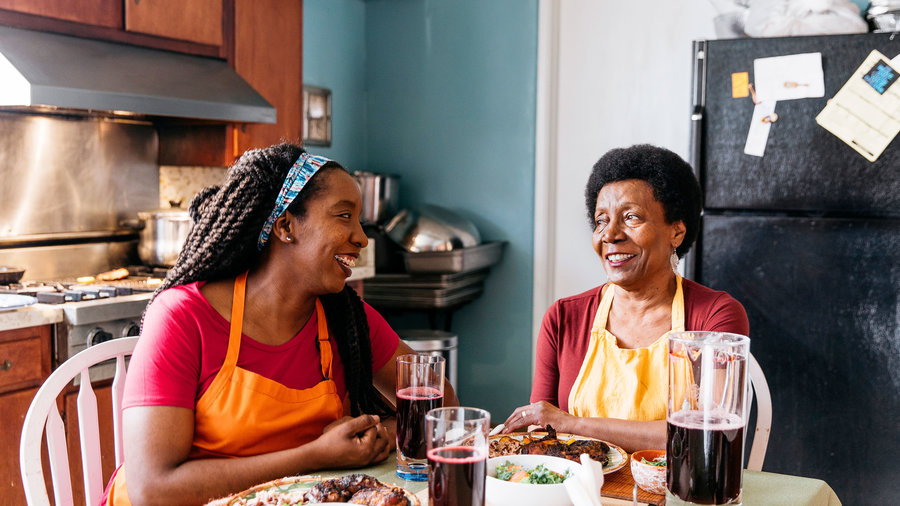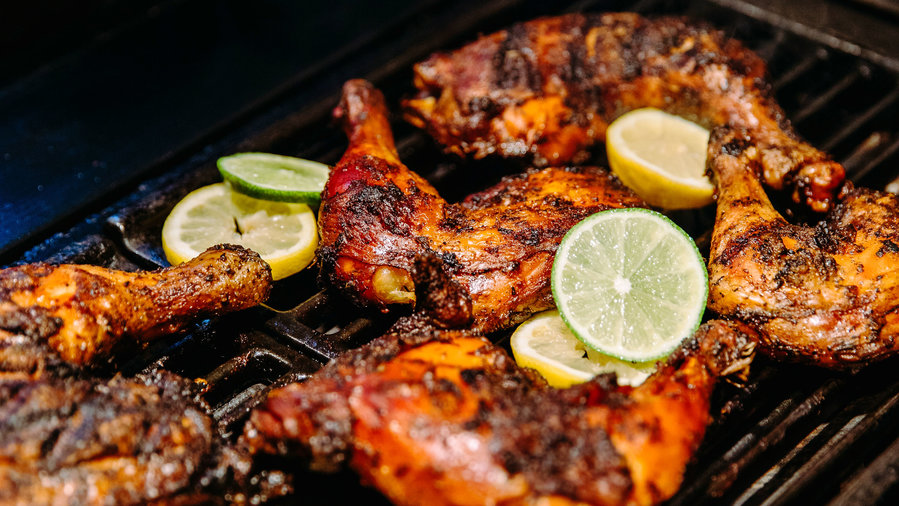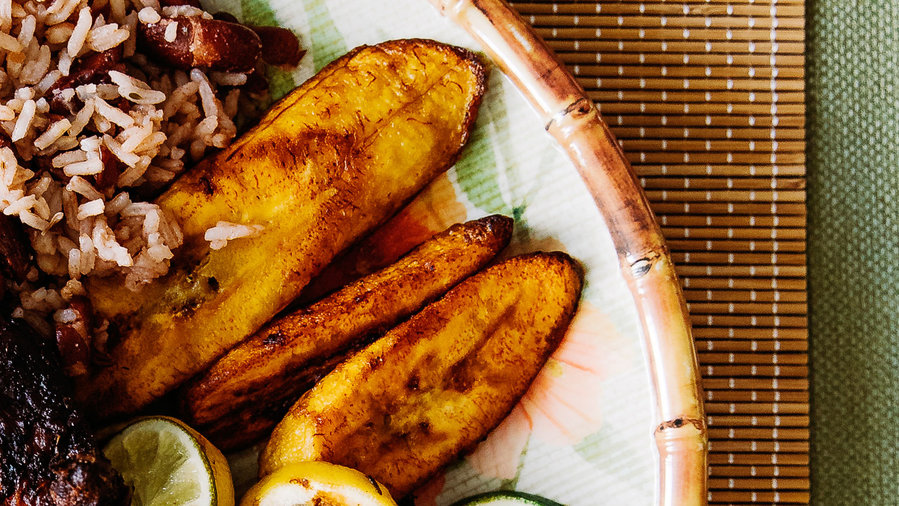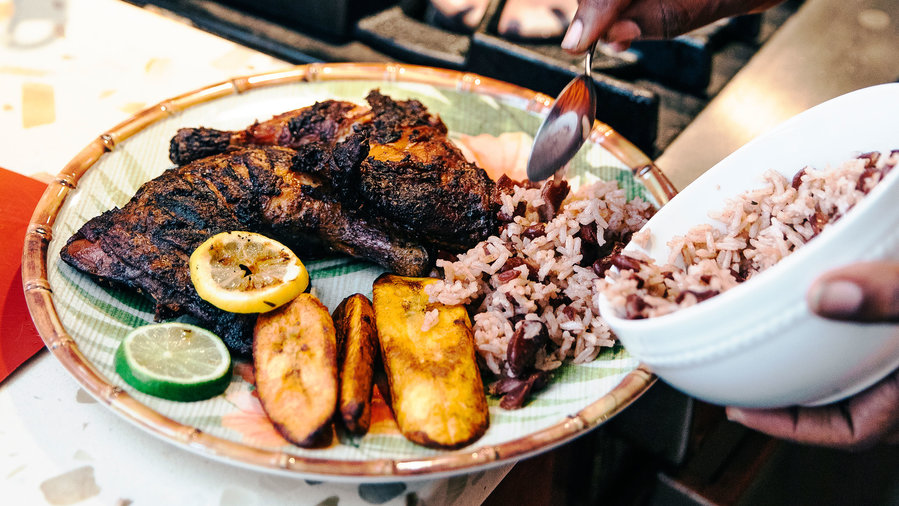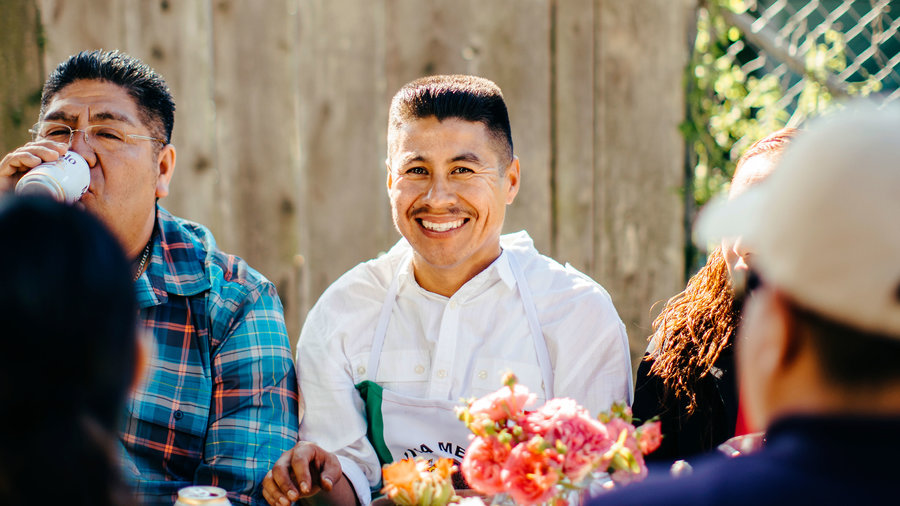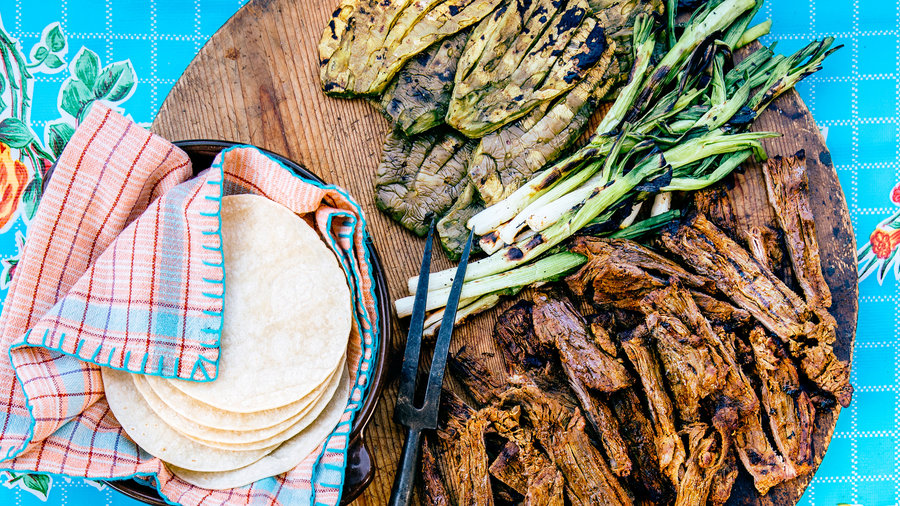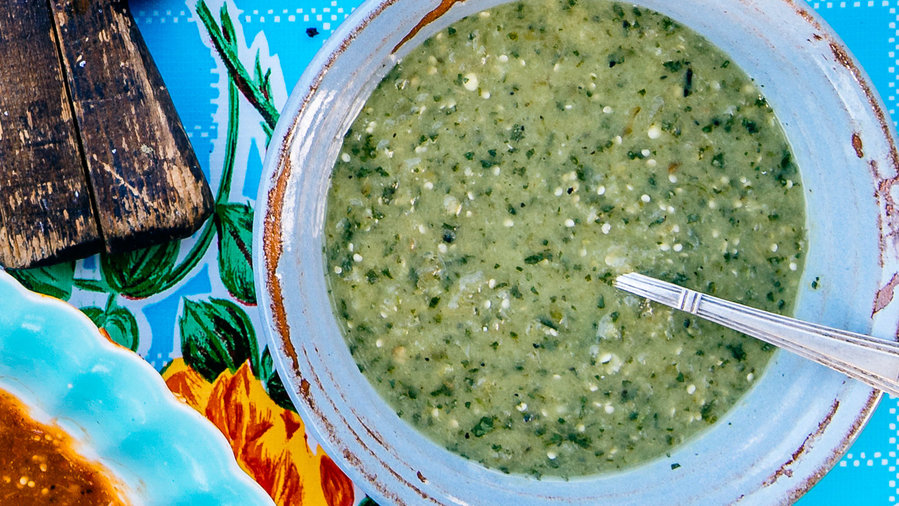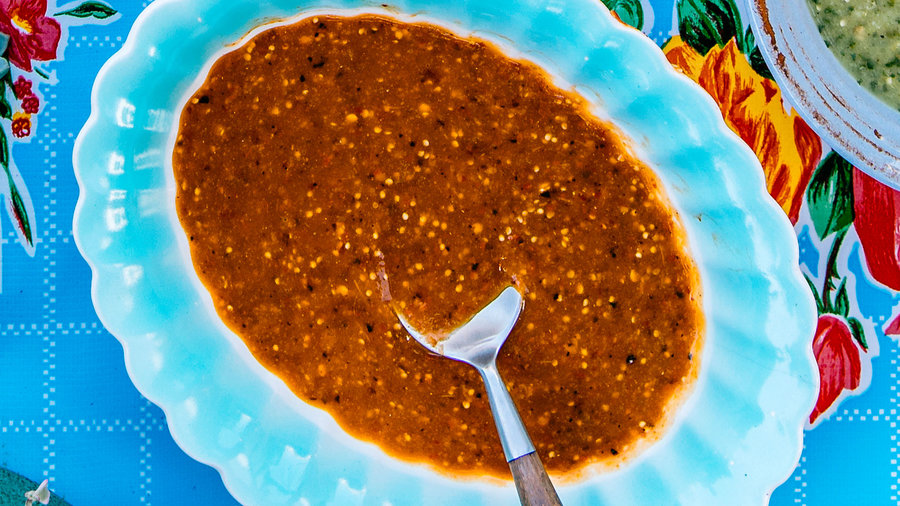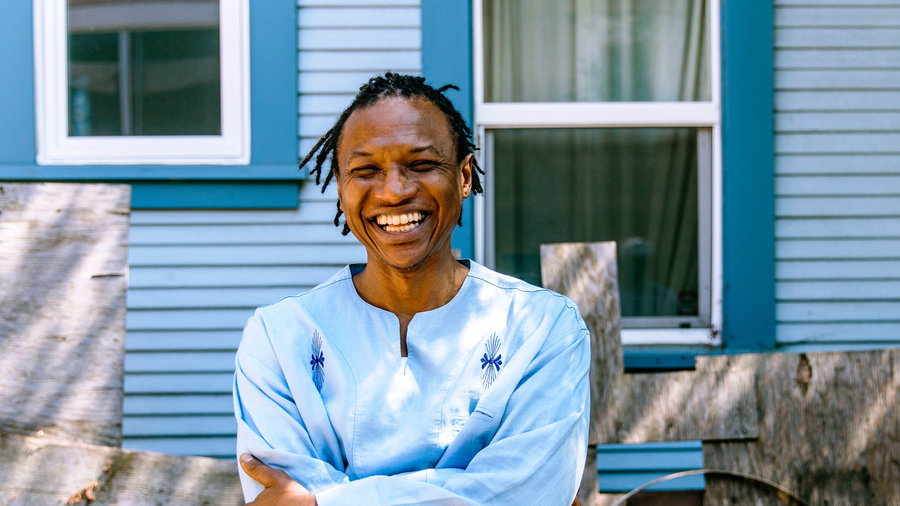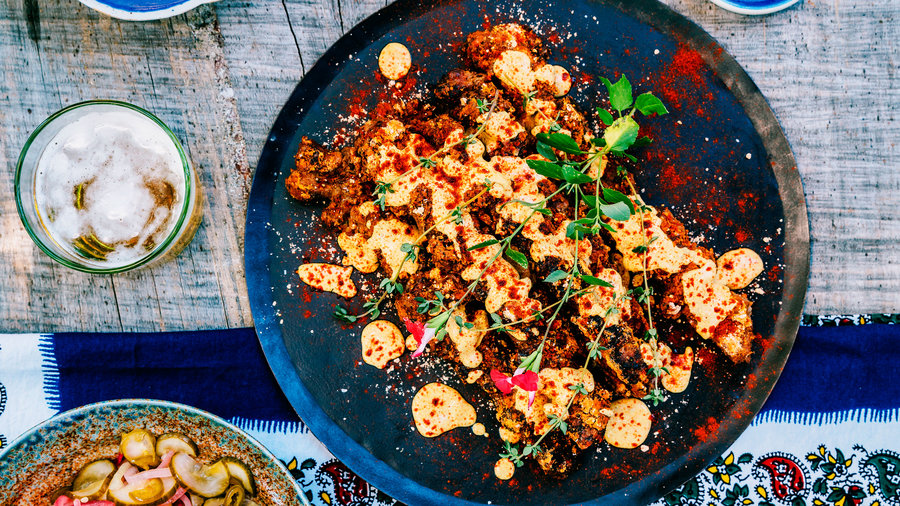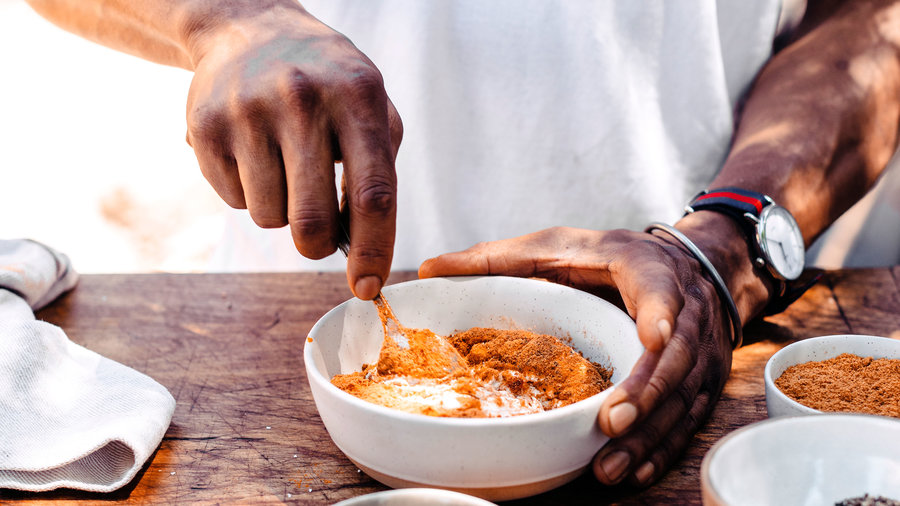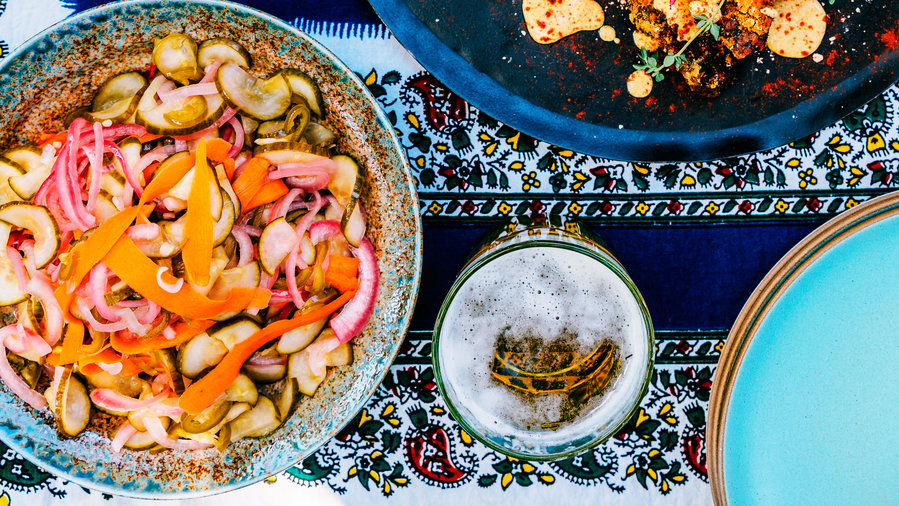Jamaican: The Joneses
Growing up in Jamaica, Victoria Jones never ate jerk chicken at home—but she vividly remembers eating it. “It’s cooked in these lean-tos on the side of the road,” says Victoria (“Peaches” to her family). “You can smell it in the air.” When she moved to San Francisco as a young adult in the late 1970s and couldn’t find Jamaican foods in the city, she experimented with spices, soy sauce, and an assortment of peppers to re-create the flavor she remembered. “I have a little knack for that,” says Victoria, who worked as a registered nurse until retiring a few years ago.
Nearly four decades later, a version of her recipe has landed on the menu of Peaches Patties, the Jamaican food kiosk opened by Victoria’s daughter, Shani Jones-Taye, in San Francisco. “Some customers who are from the islands will hear me talk and say, ‘Oh, are you from Jamaica? I don’t hear an accent,’ ” says Shani, who splits her time between working at the eatery with her husband and completing a doctorate in organizational leadership. But any doubts about her roots are put to rest when people try her food, which also includes rice and peas, plantains, and the meat-filled hand pies called patties.
Does the jerk chicken make the grade with Mom? “It’s good,” says Victoria, laughing. “It’s really good. I’m very proud of her.”
Peaches’ Jerk Chicken
“In Jamaica, they don’t have mild, medium, and hot. It’s just hot,” says Shani. Her California version of jerk chicken is medium-hot, and the longer you marinate it, the spicier and more flavorful it becomes. For blazing hot, use 5 habaneros and marinate it 24 hours. She likes to wash it down with a homemade hibiscus cooler.
Recipe: Peaches’ Jerk Chicken
Fried Plantains
Perfectly cooked plantains require ripe fruit. If these starchy cooking bananas stand until they have plenty of black spots and are moderately soft, they’ll fry up nice and sweet and caramelize outside as they brown.
Recipe: Fried Plantains
Jamaican Rice and Peas
In Jamaica, where dried beans are called peas, a pot of them cooked with rice, coconut milk, and allspice is a given at most meals. Shani’s recipe makes a generous amount; any leftovers reheat well in the microwave.
Recipe: Jamaican Rice and Peas
Mexican: Vidal Mozqueda
Cooking for a crowd doesn’t faze Vidal Mozqueda, who often hosts generous fence-to-fence gatherings behind his home in San Francisco. “At home, my wife is the chef,” Vidal demurs, “but I take care of the people in the backyard.” And at their parties, the number of guests often swells to more than 100. “My relatives, my wife’s brothers, the neighborhood–they’re all welcome,” says Vidal, who works as a busser at Acquerello restaurant in San Francisco.
Vidal immigrated from Michoacán, Mexico, to California at age 17, and credits his Tío Jose Leyva, a now-retired construction worker, with teaching him how to cook. It was his uncle, in fact, who first showed him how to make carne asada, one of Vidal’s signature dishes at the grill. Over the past 20 years, Vidal has put his own spin on the classic recipe, adding beer and nopales to make it tangy and bright; his wife’s homemade green and red salsas underscore the chile flavors and char on the meat.
During a typical party, you’ll find Vidal presiding over his oversize charcoal kettle, grilling his carne asada in waves and serving it up to guests. But sometimes, he admits, “people don’t even wait for a paper plate—they just grab tortillas and meat right off the grill.”
Carne Asada with Nopales and Green Onions
Carne asada is ideal for hosts because it’s quick and flavorful even without a marinade. Vidal buys thinly sliced skirt steak at a carnicería and grills it over a searing mesquite lump-charcoal fire; we used part briquets to help the fire burn longer. Cooked on a gas grill, the recipe is less smoky but still a crowd-pleaser. To drink, Vidal offers beer and pomegranate–sparkling water spritzers.
Salsa Verde
Barbara Mozqueda, Vidal’s wife, is in charge of the salsas. This one, medium-hot and with a nice char on the tomatillos and chiles, is always a hit.
Recipe: Salsa Verde
Ghanaian: Robert Edwards
When Robert Edwards feels homesick, he heads to his Oakland backyard and makes yaazzi—traditional meat skewers from his native country of Ghana. “There’s no chewing; it’s inhaling,” says Robert, who works as a line cook at Duende, a modern Spanish restaurant in Oakland.
A specialty of his mother’s Sisaala ethnic group, yaazzi is the name for both the grilled skewers (traditionally lamb or goat) and the peanut and spice rub that’s sprinkled on top. In Ghana, the dish often starred at big family gatherings, says Robert. “All the aunts would be in town. And when nine women and their kids descended on the family compound, it was always a good time.” Today, Robert—whose family moved to Berkeley when he was a teenager—doesn’t need a special occasion to make yaazzi. Sometimes, he cooks it for just himself and his mom; on other days, it’s part of an impromptu cookout with neighbors. “When I fire up my barbecue, I usually ask if anyone has something they want to grill,” he says. Friends arrive bearing sausages, chicken, leg of lamb, and pork ribs, which Robert cooks up and serves alongside the yaazzi. “Before I know it, there’s five guys grilling and enjoying the day.”
Ghanaian Peanut and Spice Lamb Skewers (Yaazzi)
If you haven’t tried Ghanaian food, the peanuts and warm spices in this dish taste familiar, yet come together in a way that’s surprising. The skewers are also excellent with beef, and almonds instead of peanuts. You’ll need 12-in. metal or wooden skewers.
Spiced Yogurt Sauce
For extra flavor and flair, Robert serves his yaazzi skewers with this non-traditional sauce.
Recipe: Spiced Yogurt Sauce
Quick Cucumber Carrot Pickle
Robert likes the American touch of a tart pickle on the side as a counterpoint to the richness and spice of yaazzi. It’s great with fried chicken sandwiches and burgers too.
Recipe: Quick Cucumber Carrot Pickle
